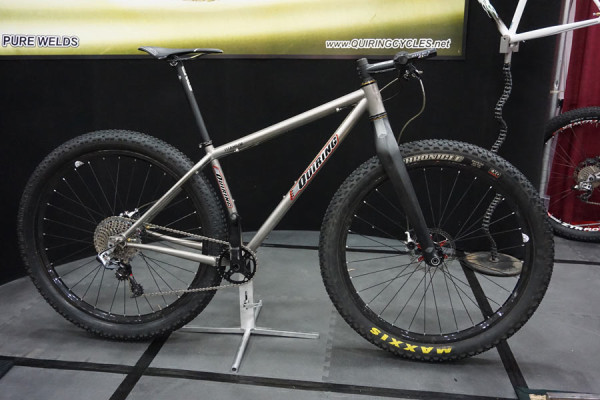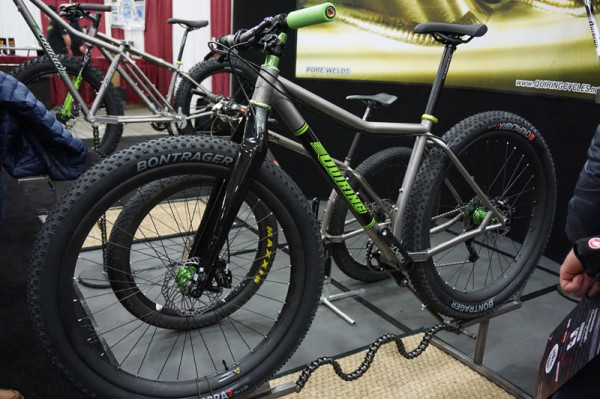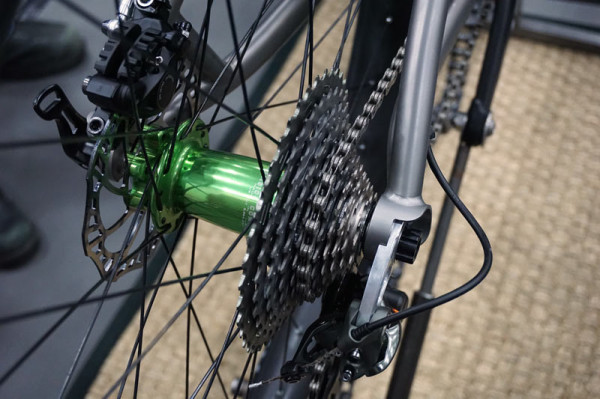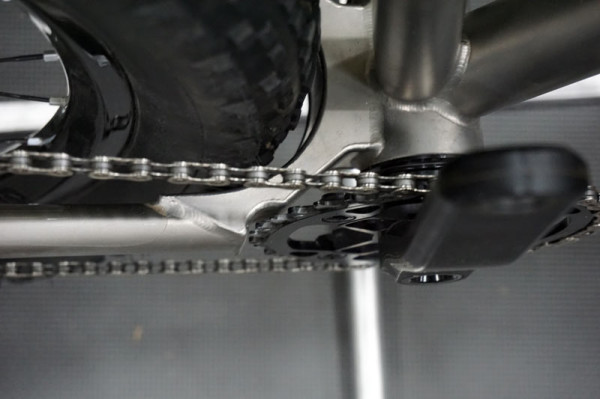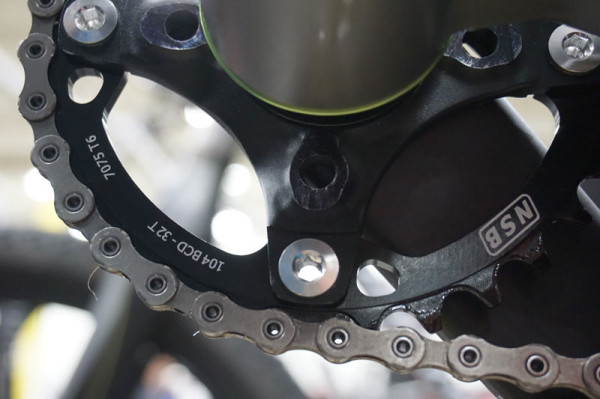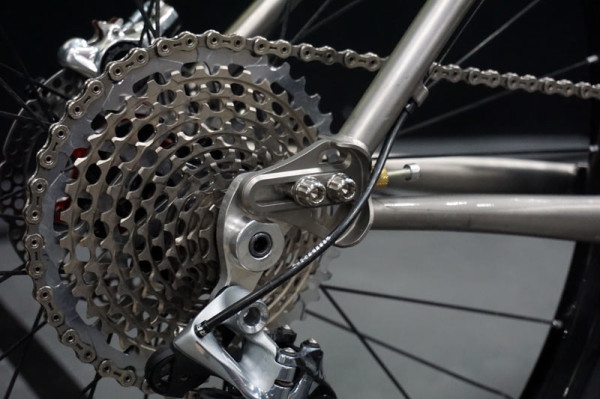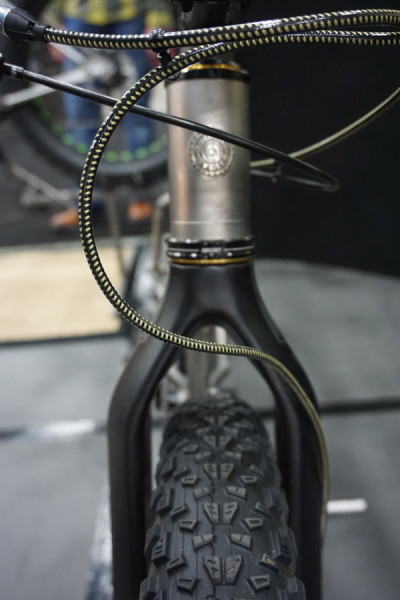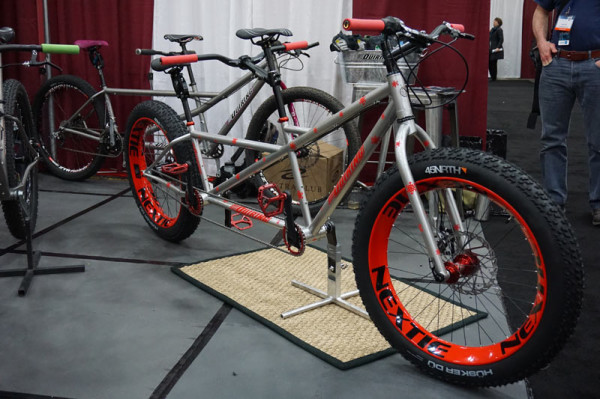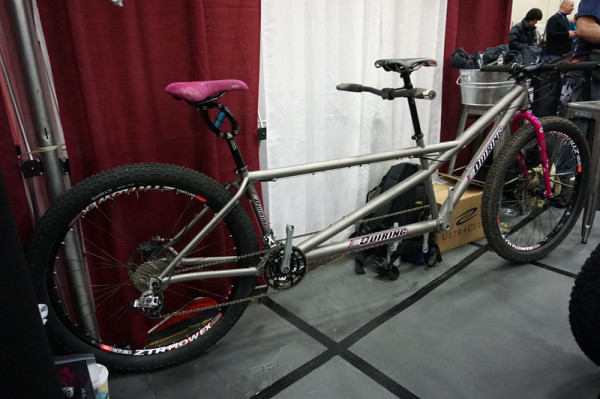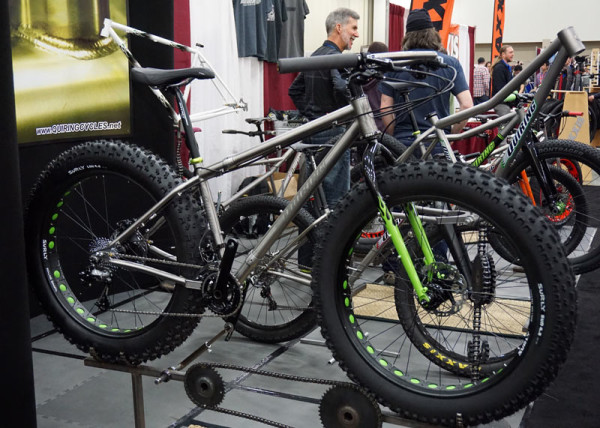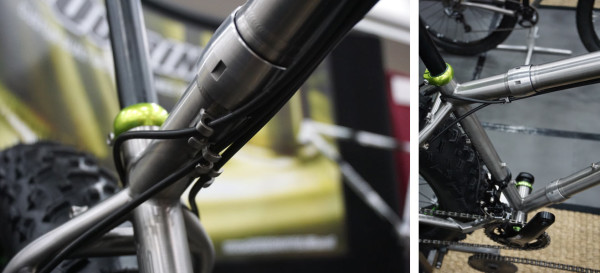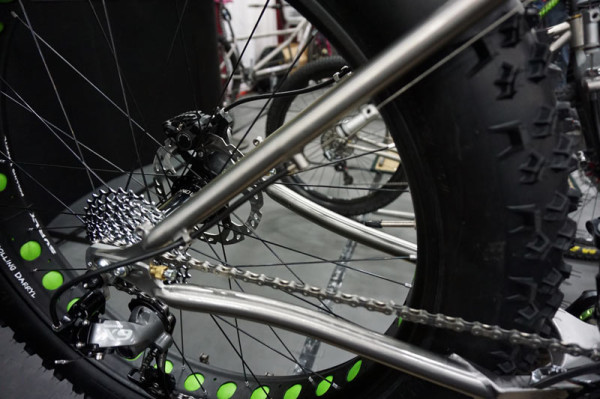With all the hullabaloo surrounding the new Boost 148 rear axle standard, one could be tempted to think that was the only way to accomplish goals like improved wheel stiffness, more clearance and ideal chain lines, all while remaining lightweight.
Well, Scott Quiring thought differently, and he managed the hat trick without it, using off the shelf standards to create a 29+ bike with an insanely short chainstay of just 17″…with 29×3.0 tires!
Here’s how he did it…
Two of his booth bikes had this set up, so you’ll see pics of these two mixed together to illustrate the design.
He stared with a 157mm rear thru axle, something that’s been around for DH bikes for years. “What 157 lets you do is have a true dishless wheel,” Quiring said, “putting even spoke tension and angles on both sides of wheel. Scott Quiring says they measured it and it gives a true 25% increase in stiffness over a 135/142 spaced rear wheel.”
The tricksy part is that it still has a standard 73mm bottom bracket shell, so it uses standard cranks and maintains a standard Q-factor. However, to get the chainline out to 57mm so it’s inline with the wider cassette placement, he simply switches the chainring to the outside of the spider.
It’s a simple hack of using a triple chainring spider, then just mounting a 104bcd narrow/wide chainring on the outside of the spider where the big ring would normally go. He ground down the granny gear mounts to tidy up appearances.
“They didn’t have to come up with boost 148,” he says. “They could have just used existing standards and accomplished the same goals.”
The only potential issue could be heel clearance on the chainstay for some riders. Otherwise we thing it’s a pretty clever concept!
The bike with the matte Whisky fork and red decals can go as short as a 17″ chainstay even with 29×3.0 tires. In addition to creating his own chainstay yoke and the clearance provided by the wider drivetrain placement, clearance is added by bending the seat tube.
It even has an Angleset so he can adjust the head angle to the trails at hand.
The rest of his booth could be summed up as all-fat-all-the-time. This fat bike tandem was joined by…
…a 29+ tandem.
This travel fat bike has 190mm rear spacing, but can also be set up as a 29+ in the warmer months.
Yep, frame couplers means this fat bike is ready to be packed into a trunk or one really, really big suitcase. The shift cables both have inline threaded couplers, and the rear brake hose runs through these opposing guides so it can simply be unbolted from either end (lever or caliper is removed) and quickly pulled loose from the other end of the bike.
Everything’s custom, and Ti frames start at $2,700. Steel at $1,600.
